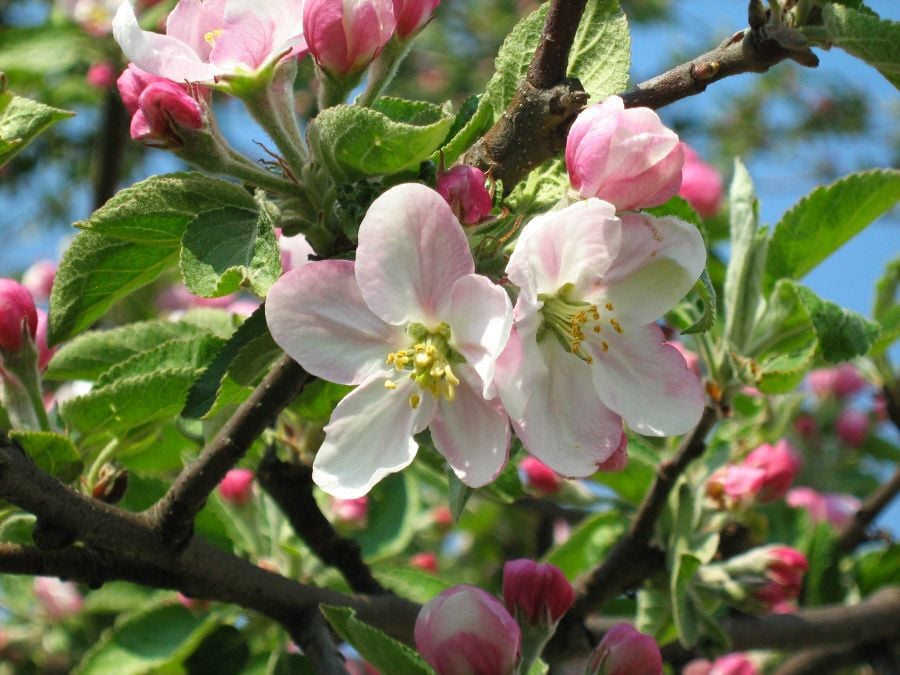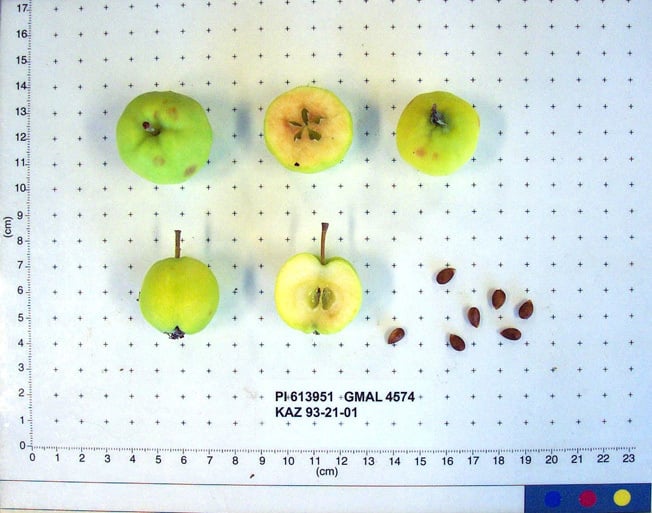Pomiferous
Welcome to the world's most extensive apples (pommes) database.
Information on over 7,000 apples is available here, all carefully researched and provided in a way that is easy to navigate.
Malus sieversii
type: Cider, Eating, Pie
synonyms: Crabapple
summary: Recognized as being the progenitor of the domestic apple, this is considered the true wild apple, native to Kazakhstan and spread to points west by way of the Silk Road.
identification: Fruit grows to about the size of a tennis ball. Round. The base colour is green over which is a yellowish blush. The stem is slender and moderately long, set in a shallow pleated cavity. The calyx is proportionately large and partly open, set in a very shallow or no basin.
characteristics: The flesh is cream-coloured. Soft. Little or no acidity
uses: As it spread westward Malus sieversii was exposed to other varieties, both intentionally and carelessly, along the way.
origins: Malus sieversii originated in mountains of Central Asia and was likely spread westward to Europe by traders returning from the Orient. In its native form and native range, Malus sieversii's continued survival in modern times is listed as vulnerable with the threat of extinction in its native range. It is, however, widely cultivated on most continents.
cultivation: Can grow to 12 metres tall, though most often seen around five metres.
progeny: Malus pumila
vulnerabilities: Small or no susceptibility to most disease.
harvest: Can be harvested in the last half of the fourth period.
notes: Scientists have long wanted to know and have, for years, argued vehemently about the ancestor of the modern, domesticated apple. Thanks to DNA analysis, the question is now settled: Malus sieversii, native to the mountains of southern Kazakhstan, is the wild ancestor of Malus pumila, the basic building block of almost all apples.
pollination peak: 1
ploidism: Diploid. Self sterile.
harvest period: 4
hardiness: 4
Donate a cider?
©2016-2021 Pomiferous.com. All rights reserved

